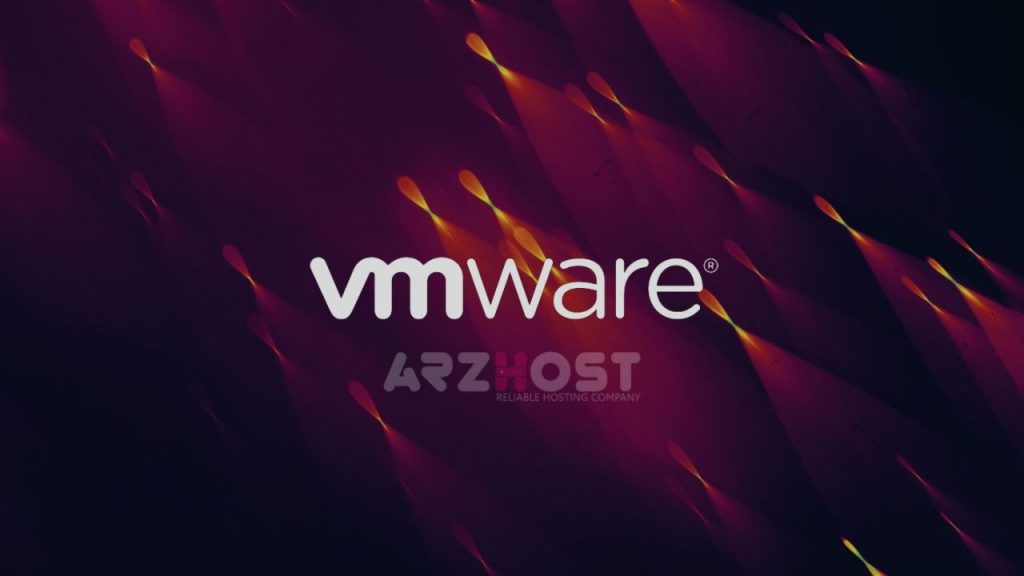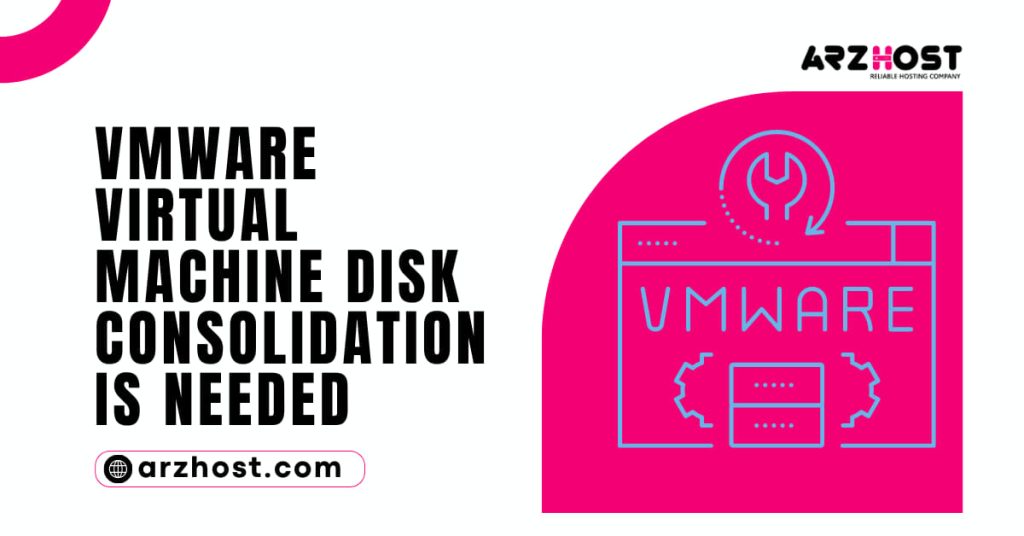Virtual machines in VMware vSphere appreciate many advantages. They work constantly with predominant execution if the appropriate gear is used and the right programming course of action is applied. “VMware Virtual Machine Disk Consolidation is Needed”, Now and again the virtual machine cementing required status is displayed in the VMware vSphere Client, and a system director needs to fix this error.
This blog passage explains why VMware virtual machine circles cementing is required and how this slip-up can be fixed. Around here at ARZHOST, “VMware Virtual Machine Disk Consolidation is Needed”, we have seen a couple of such VMWare-related Errors as a part of our Server Management Services for the web has and online expert centers.
Today, “VMware Virtual Machine Disk Consolidation is Needed”, we will examine the establishments for this error and see how to fix it.
What Is VMware Disk Consolidation?
Virtual circle mix is the strategy engaged with mixing virtual plate archives made ensuing to taking VM sneak peeks. You can begin circle association on solicitation to avoid execution debasement and various issues. “VMware Virtual Machine Disk Consolidation is Needed”, Exactly when you take a review, delta circles are made and changes stay in contact with the appropriate delta plate (the latest delta circle obviously, until one of the past portrayals is picked to restore the virtual machine).
Along these lines, overabundance data is accessible in the virtual machine amassing because each delta circle contains all movements made when stood out from the past delta plate state, “VMware Virtual Machine Disk Consolidation is Needed”, and the parent plate stays unaltered. Right when the chain of portrayals and related virtual circle records ends up being tremendous, execution corrupts.
Right, when you perform VMware plate cementing, data from delta circles is met to a single circle, and no tedious data is left on the DataStore where this current VM’s records are found. “VMware Virtual Machine Disk Consolidation is Needed”, Additional room is cleaned after you join virtual machine plate records. Recall that VMware proposes using near 32 sneak peeks for each VM.
Expected Reasons for the VMware Disk Consolidation Error
The VMware virtual machine circles hardening is required mix-up message is displayed in the VM Summary tab in the VMware vSphere Client (screen catch underneath). One of the typical clarifications behind this Error message is erroneously eradicating a VM review, “VMware Virtual Machine Disk Consolidation is Needed”, which can leave VMDK records related to portrayals and log archives on the DataStore (for example, after you played out the Delete All or Delete action for VM portrayals).
The most generally perceived explanations behind the virtual machine association required status:
- Inadequate plate space on the VMFS DataStore to consolidate VM reviews and union virtual circle records. If there is under 1 GB of free space on the DataStore, “VMware Virtual Machine Disk Consolidation is Needed”, this error may occur.
- Low execution of a limit structure attached to an ESXi has on which a VM is running. If the portrayal size is gigantic or times out, “VMware Virtual Machine Disk Consolidation is Needed”, the review mix can miss the mark.
- Connection issues between an ESXi host and vCenter.
- Portrayal records are locked by a pariah application, for example, a support application. This may occur if a support application didn’t finish a support work and locked the see (support applications can make a temporary portrayal of a virtual machine when running support). Support applications can’t quiesce circle without using the sneak peek strategies to make dependable support of a running VM.
Basically, “VMware Virtual Machine Disk Consolidation is Needed”, you should restore the consistency of VM plate records.
How to Fix the Error?
To fix the virtual machine association required status, right snap the VM name in the VMware vSphere Client, and in the menu that opens, click Snapshots > Consolidate.
Snap Yes to avow and join virtual machine circle records. If there is a concern that a couple of data can be lost during VMware circle association, make a VMware VM support, “VMware Virtual Machine Disk Consolidation is Needed”, for example, copy all VM reports to another envelope on a DataStore and subsequently perform VMware plate mix.
Deferral until the VMware circle cementing is done and the logs are cleared. You can see the task improvement in the task board at the lower part of the VMware vSphere Client interface. In case the VM is running, “VMware Virtual Machine Disk Consolidation is Needed”, VM execution can ruin during this movement. The time expected to finish this action depends upon the VM size, the number of reviews, and VM load.
After the VMware plate association undertaking is done, “VMware Virtual Machine Disk Consolidation is Needed”, the counsel that VMware virtual machine circles hardening is required should evaporate.
The error that May Occur
A portion of the time, another error can occur during VMware plate hardening and the going with botch message is shown:
 Unsuitable to will record since it is locked. “VMware Virtual Machine Disk Consolidation is Needed”, An error occurred while consolidating circles: Failed to lock the record. Mix failed for plate center point ‘scsi0:0’.
Unsuitable to will record since it is locked. “VMware Virtual Machine Disk Consolidation is Needed”, An error occurred while consolidating circles: Failed to lock the record. Mix failed for plate center point ‘scsi0:0’.- Locks can be in like manner made when support applications use the hot-add circle decision for support while using portrayals. “VMware Virtual Machine Disk Consolidation is Needed”, The VM record lock is relied upon to avoid synchronous stays in contact with the report by various ESXi has.
The effort to play out the going with exercises to fix this Error.
Restart the board experts on the ESXi server on which the VM stays. “VMware Virtual Machine Disk Consolidation is Needed”, Open ESXi shell or interface with the ESXi have through SSH and run the request as root:
- sh restart
- of course
- /, etc/init. d/hostd restart
- /, etc/init. d/vpxa restart
You can in like manner open the ESXi direct control place, go to Troubleshooting Options, and select Restart Management Agents (press Enter to order the necessary decision, then, press F11 to certify).
Truly investigate the locked archive with the request:
vmfsfilelockinfo - p/vmfs/volumes/vm_datastore/vm_name/vm_name.vmx
Check the hosted log record assuming you needed to separate the way on the DataStore where the VM archives are found.
cat/var/log/hostd.log |grep - I vm_name
Go to the VM inventory on the DataStore when you understand the VM reports’ region:
circle/VMS/volumes/datastore name/vm_name
Run the request to list ESXi has that are locking the VM records:
for I in 'ls'; do vmfsfilelockinfo - p $i ;done grep 'is locked in\|Host having the lock\|Total time taken' | sed 's|Host guaranteeing the lock on record is||g'|sed 's|Total time| - |g' | awk '{print $1}' |uniq
Restart ESXi the board subject matter experts, including hosted and vpxa as explained above, “VMware Virtual Machine Disk Consolidation is Needed”, or run these orders on the ESXi have locked the VM records:
/, etc/init. d/hostd restart/, etc/init. d/vpxa restart
Another strategy to open VM records
As another choice, “VMware Virtual Machine Disk Consolidation is Needed”, Effort these means to fix an error that occurred while joining circles: Failed to lock the archive.
- Close down the virtual machine.
- Take another VM circle see.
- Delete all current VM sneak peeks. Right snap the VM name in vSphere Client, select Snapshots, and snap Delete All Snapshots.
- Clone the VM or move the VM to another ESXi have with vMotion if the slip-up has not been fixed now.
- The effort to join portrayals without a doubt, as explained beforehand.
- In case these exercises didn’t help, Effort to shut down the VM, open VM settings, select the VM decisions tab, then, develop the Advanced region, and snap Edit Configuration.
In the Configuration limits window, click Add Configuration Params. Add the asyncConsolidate.forceSync limit and put down this limit to TRUE. “VMware Virtual Machine Disk Consolidation is Needed”, On occasion, the virtual machine association required status can be achieved by clashing – stick. vmdk records that are made for changed square after (by VM support programming, for example).
The effort to delete CTK archives. They are not needed to see hardening. Make sure to back up VM archives before deleting CTK records. Then, “VMware Virtual Machine Disk Consolidation is Needed”, Effort to harden virtual machine circle records again.
The Consolidate decision is torpid
In case the VMware join portrayal decision is become dark out (idle), a working Effort can be running on the VM now. If you see the “recognized an invalid portrayal arrangement” botch, a couple of sneak peeks can be broken or there are separated chains of reviews. For the present circumstance, Effort to do the going with exercises.
Partner with the ESXi server through SSH and go to the list where the VM records are arranged on the DataStore.
conservative circle vmfs/volumes/Datastorename/Foldername
You can check the VM reports’ “VMware Virtual Machine Disk Consolidation is Needed”, the region in the VMware vSphere Client, and find the space of virtual plates by auditing VM settings.
Recognize what circle portrayals are being pointed to:
cat VM-name.vmx | grep SCSI*
See the respect check virtual plate records including virtual circle portrayal archives. For example, the name of the virtual circle archive is displayed in the line. “VMware Virtual Machine Disk Consolidation is Needed”, This isn’t a portrayal:
SCSI 0:0. filename = "VM-Name. Vmdk"
In the yield line, the name of the virtual plate see the record is shown, and you are pointing to the portrayal:
SCSI 0:0. filename = "VM-Name-000002.vmdk"
“VMware Virtual Machine Disk Consolidation is Needed”, A SCSI virtual plate controller is used in the VM plan in this model.
The accompanying request truly sees what each see is featuring. Use this request to perceive which portrayal is featuring the accompanying plate record (the see vmdk archive or a base circle vmdk report) in the review chain.
cat VM-Name-000002.vmdk | grep parentFileNameHint
You may need to execute this request again for other vmdk records (like VM-Name-000001.vmdk in this model) until you track down the necessary base circle. “VMware Virtual Machine Disk Consolidation is Needed”, This methodology helps you with finding the inconsistency.
If you have found the abnormality, for example, VM-Name-000002.vmdk is featuring VM-Name-000001.vmdk which is featuring VM-Name. Vmdk, run vmkfstools on the most raised spot of the circle see chain (VM-Name-000002.vmdk for the present circumstance):
vmkfstools - q - v10 VM-Name-000002.vmdk
This request Efforts to open and close all vmdk archives in the chain and illuminates you where disillusionment occurs.
Using PowerCLI
As a choice as opposed to executing VMware plate hardening in the VMware vSphere Client graphical UI, “VMware Virtual Machine Disk Consolidation is Needed”, you can use vSphere PowerCLI with the request line interface.
- Partner with the vCenter Server that arrangements with the ESXi have with the VM that has the virtual machine cementing required status. Enter capabilities when incited.
Partner VI Server vcenter01.test.com
- Get the overview of VMs with the virtual machine cementing required status:
Get-VM | Where-Object {$ _. Extension data.Runtime. Consolidation Needed}
- Perform VMware plate cementing.
Get-VM | Where-Object {$. Extensiondata.Runtime. Consolidation Needed} | “VMware Virtual Machine Disk Consolidation is Needed”, for each {$. ExtensionData.ConsolidateVMDisks_Task ()}
Conclusion
This blog passage has explained ideas that can help you with fixing the virtual machine cementing the required status. “VMware Virtual Machine Disk Consolidation is Needed”, VMware virtual machine plates hardening is commonly required when one of the portrayals is tainted, a see chain is clashing, or a portrayal is locked by another ESXi have. Make a point to reliably run VMware VM support for virtual machines running in VMware vSphere.
People Also Ask
Question # 1: What is consolidated in VMware?
Answer: Deleting a snapshot leaves the current state of the virtual machine or any other snapshot untouched. Deleting a snapshot consolidates the changes between snapshots and previous disk states and writes to the parent disk all data from the delta disk that contains the information about the deleted snapshot.
Question # 2: Why do we need snapshot consolidation?
Answer: The warning ‘Virtual Machine disks consolidation is needed in the Summary tab of a virtual machine in the VMware vSphere console means that when deleting a snapshot (using the option Delete or Delete All), the snapshot VMDK files or logs have not been deleted correctly (remain on the storage).
Question # 3: What happens when you consolidate snapshots?
Answer: This option commits a chain of snapshots indicated by the delta files to the original virtual machine and then removes them. If you do not perform the snapshot consolidation, the snapshot delta files could continue to grow and consume all space on the datastore. In the Confirm Consolidate window, click Yes.
Question # 4: What is a snapshot in VMware?
Answer: A VMware snapshot is a copy of the virtual machine’s disk file (VMDK) at a given point in time. Snapshots provide a changelog for the virtual disk and are used to restore a VM to a particular point in time when a failure or system error occurs. Snapshots alone do not provide backup.
Question # 5: What is VMware consolidation?
Answer: What Is VMware Disk Consolidation? Virtual disk consolidation is the process of merging virtual disk files created after taking VM snapshots. You can initiate disk consolidation on demand to avoid performance degradation and other issues.









